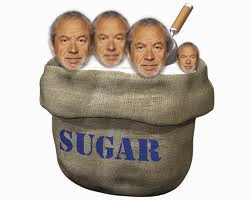Original Photo (below)


 Vogue, one of the leading fashion magazines, manipulate photos in many ways. Within their magazine, some of the photos are manipulated in a creative way. So the costumes, lighting, set and make up all create the image even before any digital image manipulation.
Vogue, one of the leading fashion magazines, manipulate photos in many ways. Within their magazine, some of the photos are manipulated in a creative way. So the costumes, lighting, set and make up all create the image even before any digital image manipulation.  Left: Plus sized models Tara Lynn, Candice Huffine and Robyn Lawley on the cover of Italian Vogue. The cover story within the magazine rejoices in amazing curves that larger women have and the sensuality that accompanies that.
Left: Plus sized models Tara Lynn, Candice Huffine and Robyn Lawley on the cover of Italian Vogue. The cover story within the magazine rejoices in amazing curves that larger women have and the sensuality that accompanies that. 

 Left: Diane Arbus self portrait.
Left: Diane Arbus self portrait.  In late 1969 she was commisioned to take the Matthaei family portraits. Konrad
Matthaei (the father of the family) was a well-known television actor and
theater owner surrounded by media attention. For two days, Arbus followed the
family around taking pictures of everything, from meals, to the children
playing with their new presents. She set up her photographs very carefully by
removing obstacles and arranging people how she wanted. By the end of the two
days she had taken 322 photographs, which averages at one photograph every two
minutes, pretty impressive. All the photos represented her style and look on life. It was a vernacular photography (the photography of ordinary/normal things).
In late 1969 she was commisioned to take the Matthaei family portraits. Konrad
Matthaei (the father of the family) was a well-known television actor and
theater owner surrounded by media attention. For two days, Arbus followed the
family around taking pictures of everything, from meals, to the children
playing with their new presents. She set up her photographs very carefully by
removing obstacles and arranging people how she wanted. By the end of the two
days she had taken 322 photographs, which averages at one photograph every two
minutes, pretty impressive. All the photos represented her style and look on life. It was a vernacular photography (the photography of ordinary/normal things). Left: Walker Evans self portrait.
Left: Walker Evans self portrait. 
 He worked for Life Magazine so he was sent places to take photographs by his boss. He thought 'war was glorious' but that's probably because he could easily dip in and out of the action/dangerous situations as he pleased. Motto: get close, then get closer.
He worked for Life Magazine so he was sent places to take photographs by his boss. He thought 'war was glorious' but that's probably because he could easily dip in and out of the action/dangerous situations as he pleased. Motto: get close, then get closer. He was an American GI soldier. This meant he had to fight and take photos. He had to carry a rifle as well as a camera and couldn't dip in and out of the action. Because Vaccaro was always immersed in the fighting, he thought war was brutal and unnecessary. The standard issue camera at the time was the Speed graphic. It was too slow and not practical for a war zone so Vaccaro used an Argus C3.
He was an American GI soldier. This meant he had to fight and take photos. He had to carry a rifle as well as a camera and couldn't dip in and out of the action. Because Vaccaro was always immersed in the fighting, he thought war was brutal and unnecessary. The standard issue camera at the time was the Speed graphic. It was too slow and not practical for a war zone so Vaccaro used an Argus C3.  Left: Argus C3.
Left: Argus C3.